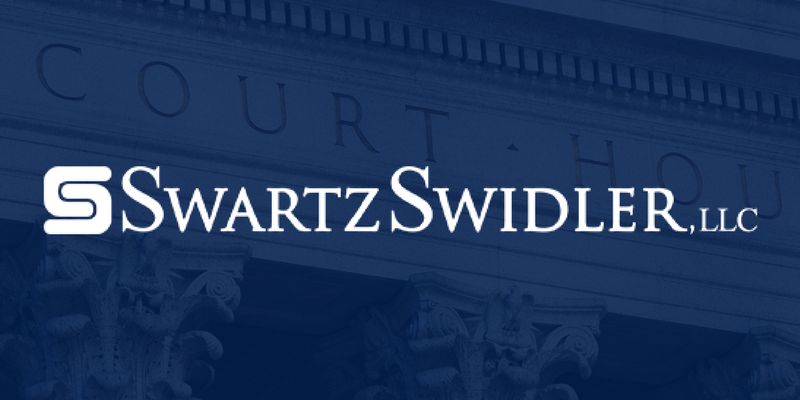In the modern workplace, employees frequently have to deal with customers and clients as a part of their jobs. Unfortunately, some customers or clients cross lines when they interact with people who are simply trying to do their jobs. In some cases, treatment by clients or customers can amount to harassment. Employees are protected against harassment in the workplace when it is based on their protected characteristics. When a client or customer harasses an employee based on their protected characteristics, their employer must take steps to end the harassment. Here is what you need to know about harassment by a client or customer from the Discrimination attorneys at Swartz Swidler.
Discriminatory Harassment by Clients or Customers
Title VII of the Civil Rights Act of 1964 (Title VII) prohibits discrimination in the workplace based on the following protected characteristics of employees:
- National origin
- Color
- Race
- Sex
- Sexual orientation
- Gender identity
- Religion
Other laws, including the Americans with Disabilities Act (ADA), the Age Discrimination in Employment Act, the Pregnancy Discrimination Act (PDA), and the Genetic Information Nondiscrimination Act also prohibit workplace discrimination based on disability, age, pregnancy, or genetic information.
Under these laws, employers can be liable to pay damages when an employee proves that they have suffered discrimination in the workplace based on their protected characteristics. Harassment based on these protected characteristics is similarly prohibited.
In most cases, federal anti-discrimination laws are applied to harassment of employees by supervisors or co-workers. The U.S. Supreme Court held that employers can also be liable for harassment by co-workers and non-employees when they know or should know about the harassment but failed to take steps to correct it. The Equal Employment Opportunity Commission (EEOC) has issued guidance for employers about sexual harassment including harassment by customers and clients.
How to Prove Harassment by a Client or Customer
Before you can prove that you were unlawfully harassed by a client or customer and hold your employer liable, you will need to show that your employer knew or should have known what was occurring but failed to take steps to end it. In cases involving harassment by non-employees, courts consider the degree of control the employer had over the situation and the non-employee’s conduct.
Employers can raise an affirmative defense against an allegation of harassment by a client or customer. If an employer can prove that they offered corrective action, but the employee failed to take advantage of the action that was offered, the company might not be liable.
If you are being harassed by a customer or client, your first step should be to file a complaint with your company’s human resources department. Your company should then investigate the situation and take steps to prevent the harassment from continuing.
When employers can show they used sufficient measures to correct the harassment, courts are unlikely to find them liable. By contrast, when an employee shows that their employer ignored or tolerated reports of harassment, the court is likelier to rule in the employee’s favor.
Harassment by Independent Contractors
Employers can also be liable for failing to take action when an employee is being harassed by an independent contractor. For example, if your company contracts with an independent contractor to service its copy machines, and the independent contractor sexually harasses you every time they come to your business, your employer should take steps to address the harassment and end it. Just like with customers and clients, the court will consider the degree of control your employer had over the independent contractor to determine liability.
What to Do if a Client or Customer is Harassing You
You should do several things if you are being harassed by a client or customer. The first thing you should do is report the harassment to your supervisor or the human resources department at your company. Review your business’s policies and procedures to understand the correct way to file an internal complaint with your company.
Document every incident of harassment, making sure to write down the dates, times, and any witnesses who were present. If your employer ignores the harassment or otherwise fails to take steps to correct it, you can file a harassment charge with the EEOC. You need to act quickly. Under Title VII, you must file a discrimination charge with the EEOC within 180 days after the last incident of harassment by your customer or client. After you file a charge, the EEOC will investigate your case by reviewing the documentation you submit and your complaint and talking to your supervisor or manager. When it finishes its investigation, the EEOC might issue a right-to-sue letter to you, which will allow you to file a formal lawsuit in court.
Consult an Employment Attorney
If you believe you are being harassed by a customer or client, notify your employer and give them the chance to correct the situation. If your employer fails to stop the harassment, you might then want to consult an employment discrimination attorney at Swartz Swidler. We can review your documentation and help you understand whether you have grounds to pursue a discrimination charge. If you have received a right-to-sue letter from the EEOC, you should also contact us. You have a limited time to file a lawsuit after receiving this notice. Call us today for a free consultation at (856) 685-7420.








